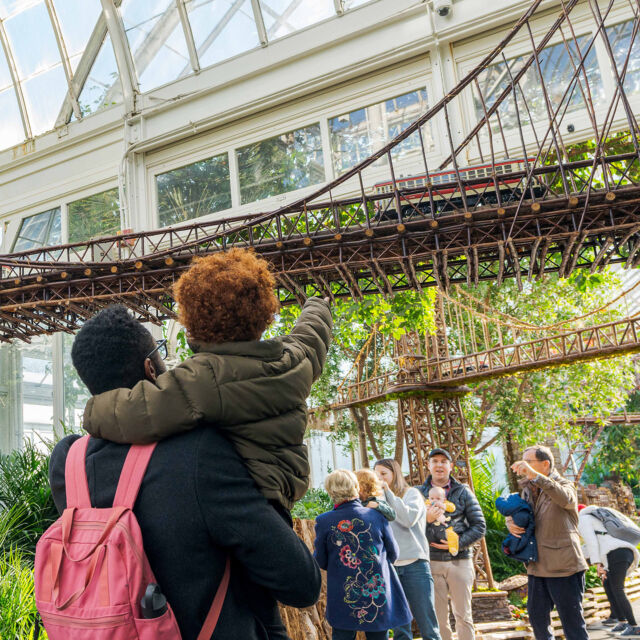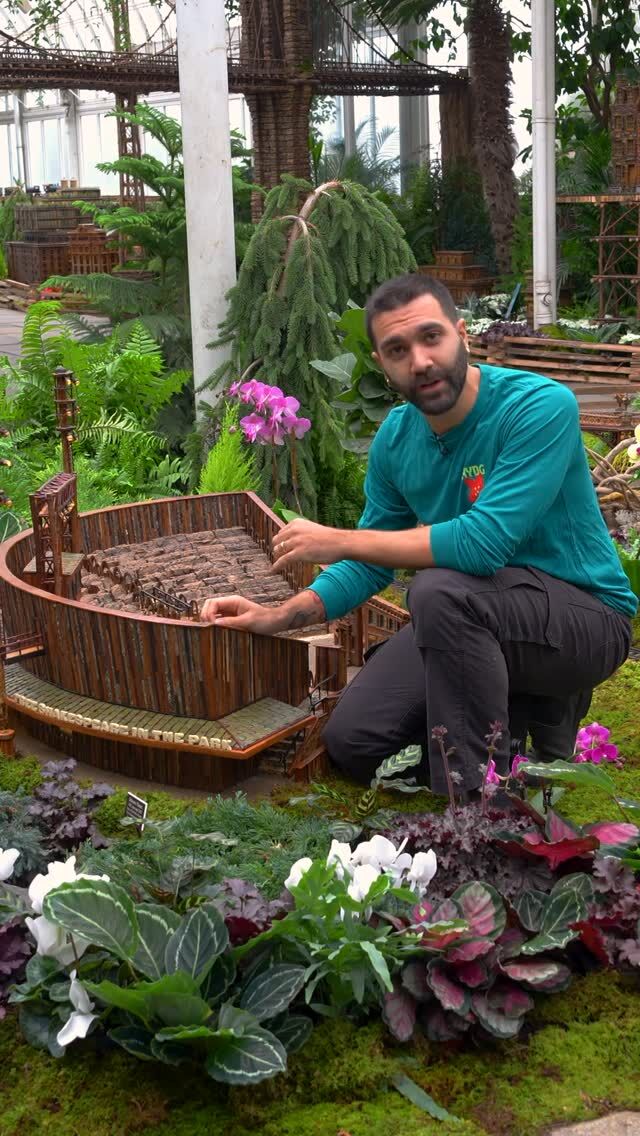How Soil Can Help Us Understand the Future of Forests
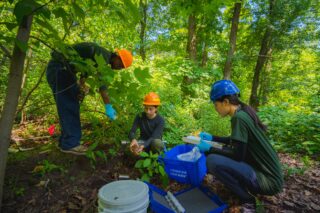
The Thain Family Forest: a 50-acre tract of old growth woodland, enjoyed by visitors who seek its beauty throughout all seasons. Its history is just as rich as the species that call it home, and despite the fact that it has faced challenges from hurricanes to invasive species, it has remained almost the same as it was 450 years ago, before the Dutch arrived, and probably well before then. It was never plowed, never logged, never changed to make room for the urban area that shoulders it. Its superlative is therefore well known and well deserved—“the largest uncut expanse of New York’s original wooded landscape”—but what does that mean, and why does it matter?
Well, let’s look at this from the ground, up—literally. We tend to gaze above at the tree canopy, but there are many processes below that can tell us even more about the Forest’s health. That’s why a team at NYBG is working on a project all about soil.
“This project kind of originated with the Garden, to be grandiose about it,” said Brad Oberle, an Associate Curator in NYBG Science. “The Garden is here because the Thain Family Forest is here. No one decided to cut it, which makes its land use history totally unique to New York City.”
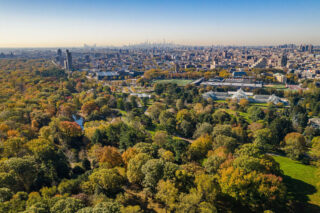
Together with John Zeiger, Manager of the Thain Family Forest, and a group of interns ranging in age from 17 to 31, Oberle and his team are measuring various factors within the Thain Family Forest, each related to its soil. These offer insights into their joint research priorities.
Together, Oberle and Zeiger decided upon three variables to study:
- Soil carbon inventory, meaning how much carbon soil can store, and how this impacts plant biodiversity and more broadly, climate change.
- Heavy metal contamination, the concentration of heavy metals like lead in the soil, and what this means for the health of the soil, health of the ecosystem, and management efforts.
- Hydrology, or the study of the movement, distribution, and management of water in the Forest and broader ecosystem.
These will then be used to understand current threats, historical trends, and future directions for management of the Thain Family Forest and more broadly, urban forests in the Northeast.
Zeiger and Oberle’s research goals work hand in hand. As part of the NYBG horticultural team dedicated to the Forest, Zeiger is interested in how management influences the health of the Thain Family Forest in particular. For example, how removing invasive species may impact the soil and the capacity for the Forest to grow more native plants.
Oberle zooms out to understand how this research can be applied to global issues surrounding climate change and urbanization—from a basic science perspective, the capacity for soil to store carbon, how that impacts plant biodiversity, and how the latter in turn impacts soil functionality.
The Thain Family Forest has its own intrinsic value as an old-growth urban forest in the Bronx, and more broadly, it serves as a reference for regional forest ecosystem monitoring. Basically, other forests can be checked against ours to better understand the health of urban forests.
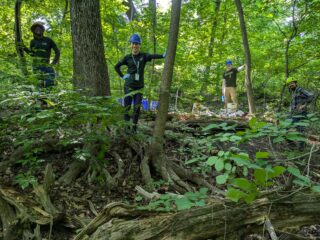
Not only is the Thain Family Forest one of the few forests in the Northeast that has never been clearcut, it has also been the subject of three decades of soil monitoring through the Institute for Ecosystem Studies, which established the field of urban ecology with the work done at the Thain Family Forest in the 1980s. This data has been used in comparison with forests going northward all the way up into rural Connecticut.
“It’s the legacy of NYBG Science going all the way back to its inception,” said Oberle. “People have been studying this forest since Nathaniel Lord Britton published the first Flora in 1898. The project that we’re doing wouldn’t be as powerful if it weren’t part of the history and the ongoing research of NYBG Science since the beginning.”
So, what can soil tell us about this ancient and revered Forest? Actually, a lot of things—if you just look beneath the surface.
Carbon
When we think about the importance of forests, we often think about trees’ ability to pull carbon from the atmosphere. But rarely do we think about the role soil plays in this—and the broader battle against climate change. When plant material or organisms decompose, carbon that was once stored in these living things is returned to the soil.
Here’s why soil is important:
- Soils can store about two to three times more carbon than living plants do.
- Carbon stores longer in soil than in plants, which hold carbon only as long as the plant is alive.
- Carbon stores longer in soil than in the atmosphere, whose carbon may eventually be taken up by the ocean or by other chemical processes.
While in the atmosphere, carbon can have long-term and widespread effects—absorbing radiation, exacerbating the greenhouse gas effect and climate change. With around 1500 billion tonnes of carbon in soil globally, it stores more than the atmosphere (760 billion tonnes) and vegetation (560 billion tonnes). Soils are the second largest active storage of carbon, following the oceans (40,000 billion tonnes), according to a report by the European Union.
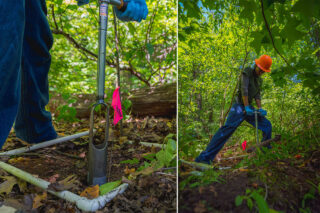
“Carbon in the atmosphere changes over every couple of decades. Carbon and trees will stick around as long as the tree lives—maybe a century or two. Carbon in the soil can stick around for thousands of years,” said Oberle. “So if we can figure out ways to put more carbon in the soil, then it is more safely sequestered, because it’s not going back to the atmosphere anytime soon.”
To understand the amount of soil carbon in the Thain Family Forest, Oberle and his team of interns are measuring 20 different plots. They do this through extracting soil cores—with “technical tiny shovels,” Oberle pointed out—to get a cylindrical column of soil, then processing these in the lab and conducting a chemical analysis.
These measurements are then compared to data from other northeastern forests, as well as the historical record of measurements that have been conducted in the Thain Family Forest.
Sounds complicated, but Oberle stresses this project is meant for even more novice scientists.
“This kind of work is really good…for people who are learning how to do science, because it connects to really big picture questions like climate change, pollution, earth science,” said Oberle. “But the day-to-day work is something that people can really handle with or without a ton of advanced laboratory or computer training.”
Oberle emphasized the importance of this project being a melding of not only students from various high schools, universities, and unique backgrounds, but also a perfect union of science and horticulture.
“Some of them are being supervised by me, some by John in Horticulture. So they’re coming from different divisions that are focusing on different aspects of the Garden’s mission, but they’re all working together on a common project,” said Oberle. “And that’s another thing that I think is really cool about this effort, is that it’s very much a collaboration between science and horticulture.
Heavy Metal Contamination
As both an old growth forest and an urban forest, our 50-acre woodland has seen and retained a lot of things—kind of like most New Yorkers.
Though its ancient structure remains intact, the Thain Family Forest’s proximity to roads, industrial development, and commercial areas have impacted it in ways that are more evident below the surface.
“For decades there was lead in our gas, which meant as we drove a car, it was coming out of tailpipes,” said Oberle. “Therefore, when there are more roads in an area, there’s more lead in the soils.”
Through its research, the Institute for Ecosystem Studies found that variation in forests’ soil and lead concentration were almost perfectly explained by the density of roads surrounding those forest patches.
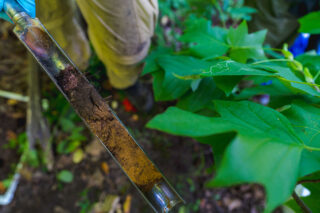
Though leaded gasoline was banned in 1970 with the Clean Air Act, we’re not sure of how lead concentrations in our Forest’s soils have decreased—and if they’ve decreased, where that lead has gone.
However, thanks to NYBG’s Horticulture team, we have an important historical record of lead concentrations in the soil over the past three decades, which we can use to understand the impact of both natural processes and forest management. Oberle’s team will also use these results to decipher where the lead has gone, and how this affects the environment—not just at NYBG, but also the Bronx River watershed, and throughout the East Coast.
“Every single forest’s soil has changed. It’s been subject to erosion and all kinds of other processes,” said Oberle. “By being able to measure the difference here, we can start not only to understand how our lead has moved around, but how lead moves around urban landscapes more broadly.”
Hydrology
To make the Thain Family Forest even more spectacular, part of the Bronx River runs through it. In order to preserve this ecosystem, Oberle hopes to understand the lead concentration in the surrounding soil to protect water quality and life in and around the river.
“I suspect there’s less lead now than there used to be,” said Oberle. “And the best explanation for why is erosion.”
Intense rain can move the metals around the landscape and wash soil into the Bronx River. To monitor this, Oberle and his team are deploying the first local weather station based on hydrology, which will measure how much precipitation gets through the canopy of the Thain Family Forest. Once it does, it can either sink into the soil and cause the soil moisture level to go up, or the water could run off the surface.
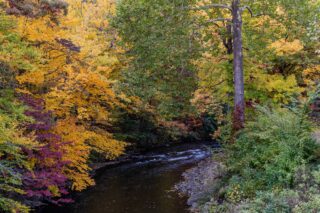
“The difference between moisture in and moisture through is going to be the moisture over,” said Oberle. “And that moisture over, it’s the kind of moisture that can influence erosion, and it’s erosion that can probably change how much lead is in the soil.”
It’s in the hydrology of the Forest that we can see an intersection between all research objectives. Rainfall can control where the heavy metals go and how much stays in the soil. It also can change the amount of carbon in the soil, because the surface layer of soil has a high concentration of carbon.
In the next blog post, we’ll touch upon how Oberle is making this research applicable to environmental policy, advocacy, and forest management.
SUBSCRIBE
Enter your email address to subscribe to this blog and receive updates on new posts.


